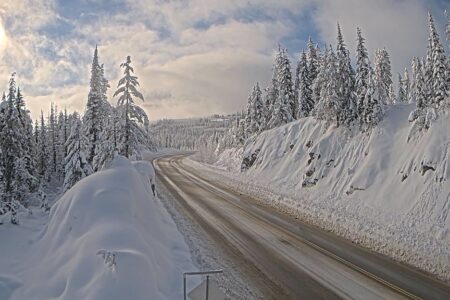Why We Should All Oppose Northern Gateway
As Enbridge tells the story, the Northern Gateway pipeline is the path to a bounty of benefits and opportunities.
This is a tall tale – a pipedream to validate increased corporate profits.
In truth, the construction of Northern Gateway – and the proposed twinning of the Kinder Morgan Trans Mountain Pipeline System – will reduce the number of jobs available in Canada, contribute to a deteriorating trade imbalance, increase Canada’s indebtedness in the world, and make it impossible to meet either BC’s or Canada’s greenhouse gas reduction targets.
Pipeline proponents – and those favouring tar sands oil extraction – pontificate that their projects will enable all of us to continue to enjoy health care, education, and the Canadian way of life.
Despite these comments, it is not a case of these pipelines or nothing.
Numerous studies have shown that $5 billion invested in green jobs and industries would create between three and 34 times the number of direct jobs compared to investing it in pipelines and oil sands extraction.
(For instance, see the report Enbridge Pipe Dreams and Nightmares written by Marc Lee and published in March 2012 by the Canadian Centre for Policy Alternatives.) Furthermore, the expansion in the number of petroleum extraction industry jobs has only offset 3% of the 627,000 manufacturing jobs lost in Canada since 2000.
Lee reaches the conclusion that “If the full costs of carbon emissions from extraction, processing and combustion were counted, the pipeline would likely be uneconomical.
While private gains accrue to the oil and gas industry, huge costs are borne by others.”
Another aspect of all the resource extraction currently planned for BC and other parts of Canada is the shift to a resource-based economy and the effects on Canada’s trade balance and debt.
In 2010, the resource sector contributed 11% of the country’s GDP (Gross Domestic Product), employed 755,000 workers, accounted for more than half the value of Canada’s exports, and attracted a quarter of all capital investment, at roughly $80 billion.
Canada is the world’s top exporter of potash, the second-largest exporter of uranium, newsprint, wood pulp and softwood lumber, the third-largest exporter of nickel and natural gas, and the largest foreign supplier of crude oil to the U.S. But that good news is not without a down side: have a look at A Cure for Dutch Disease: Active Sector Strategies for Canada’s Economy written by Jim Stanford and published in March 2012 by the CCPA. A reliance on resource exports has led to an appreciated Canadian dollar which has contributed to the loss of manufacturing jobs.
It has also led to Canada’s deteriorated trade balance as the growth in resource exports cannot replace the decline of exports from the manufacturing, tourism, and service sectors.
Because Canada no longer exports enough high value goods and services internationally, we’re becoming increasingly indebted to the rest of the world for the goods we import.
This in turn has led to the worst productivity decline in Canada’s economy in the post-WWII period.
Here’s what Stanford says: “In July 2011, unprocessed and semi-processed resource exports accounted for two-thirds of Canada’s total exports, the highest in decades.
In contrast, higher-value finished products accounted for just a third of our exports. Compare that to 1999, when finished goods made up almost 60% of our exports.
Decades of postwar progress in diversifying Canadian exports, and moving “up the value chain” in our trade, has been undone in just 10 years of this resource-led trajectory.
And it seems that the more free trade agreements we sign, the more our role as global commodity supplier is cemented.” Finally, the emissions associated with expanded oil sands production will account for over 100% of Canada’s total expected growth in GHG pollution between 2005 and 2020.
When one adds in the GHG emissions from the extraction and processing of shale gas for the liquefied natural gas plants under construction and planned for BC, it will be impossible for BC or Canada to meet the GHG reduction targets set by the respective governments.
In a February 8, 2012 policy note, Marc Lee writes that “LNG plants will be even worse than the Enbridge pipeline in terms of GHG emissions.”
Lee says the production emissions from shale gas count in BC’s emission inventory and he cites a BC Sustainable Energy Association estimate that these emissions will range from 54 to 370 megatonnes per year.
“Even if we take the lowest amount,” Lee says, “the LNG plants make it impossible for BC to meet its 2020 legislated GHG target of 33% below 2007 levels.
“In fact, it probably makes it impossible for BC to fall below 2007 levels, period.”
Are these negatives associated with pipelines and tar sands oil extraction worth it just so oil and pipeline companies can continue to make outrageous profits?
The people of BC and Canada will be big losers if these projects go ahead. These pipelines should never be laid in the ground and tar sands oil and shale gas should stay in the ground.
Michael Jessen is a Nelson ecowriter and President of the consultancy Zero Waste Solutions. He also serves as secretary and energy critic for the Green Party of BC. He can be reached by telephone at 250-229-5632 or by email at zerowaste@shaw.ca
RESOURCES:
Enbridge’s story is told on http://www.northerngateway.ca/
Kinder Morgan’s story is told on http://www.kindermorgan.com/business/canada/transmountain.cfm
Marc Lee’s Enbridge Pipe Dreams and Nightmares is available at http://www.policyalternatives.ca/pipedreams
Jim Stanford’s A Cure for Dutch Disease: Active Sector Strategies for Canada’s Economy is viewable at http://www.policyalternatives.ca/publications/reports/cure-dutch-disease
Marc Lee’s Comparing two carbon bombs: LNG plants vs Enbridge pipeline is viewable at http://www.policynote.ca/comparing-two-carbon-bombs-lng-vs-enbridge-pipelines/
























